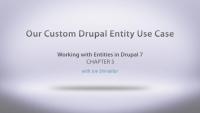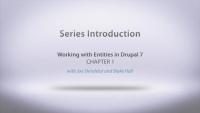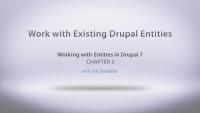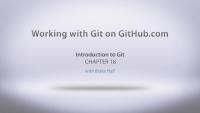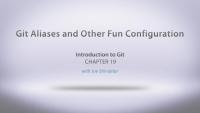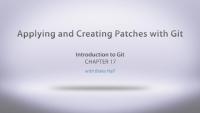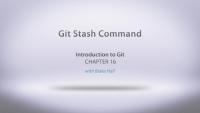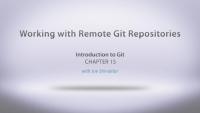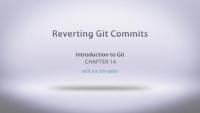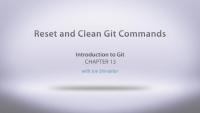In the next set of lessons we're going to be writing to the code to create our own custom entity type. The goal is to create a video entity that stores embed codes for YouTube videos and allows us to display the videos on our site. In this scenario we don't want all the overhead that comes with using the node system, like comments for example, so instead we're going to write our own custom entity for storing the data. We're going to take a look at the completed entity type that we're attempting to build and just walk through all the various components. We'll take a look at creating/updating, and deleting a video via the UI, and also the views integration and fieldability of our custom video entities.
Release Day: Creating a Custom Entity
Blog postThis week we move on in our Working with Entities in Drupal 7 series to beginning to create our own custom entity. We start by sketching out the use case we will be tackling in this series, which will be to create a video entity, and look at why we want this to be a custom entity instead of a using Drupal's existing node entity. Then we dive into setting up the basics of our entity, and getting an introduction to the entity classes we will be using.
This lesson will explore the use of EntityFieldQuery to retrieve lists of entities from Drupal without directly querying the database which can be problematic in a system where the underlying schema can change depending on configuration settings in the user interface. Again focusing on writing code that will work with any entity in Drupal and isn't hard coded to your particular setup.
Additional resources
Entities were introduced in Drupal 7 as a way of taking the things that people loved about nodes + CCK in Drupal 6 and applying them to other types of data like users, comments, and taxonomy terms. The Entity API in Drupal 7 provides a set of common functions and classes to make it easier for developers to create their own custom entity types or to work with existing ones in a generic way. The API in Drupal core however is still missing some really useful tools and is supplemented by the Entity module in Drupal contributed which we'll make heavy use of throughout the series.
In this series we'll learn about the interplay between Entities, Entity Types, Bundles, and Fields and how to write custom code to deal with each of these things. The Entity API demo site files that we use in this series are all located in the Lullabot GitHub, as well as in zip files attached to the respective video pages, under the Downloads tab.
This series covers:
- What entities are and how they fit into the Drupal ecosphere
- EntityFieldQuery
- Entity classes, what they do and how to override them
- Providing an admin UI for adding/editing and deleting entities from Drupal
- Making entities fieldable
- View modes
- Creating custom UI's for dealing with entities
- Describing entity properties to Drupal
- Views integration for entities
- Entity Metadata wrappers
- Making entities revisionable
And much much more. This series assumes that you're already familiar with the basic tenets of writing modules for Drupal and makes use of things like hook_menu() without spending time explaining them. If you're not familiar with Drupal module development, you might want to brush up by watching our Module Development for Drupal 7 first.
Additional resources
Entity API Demo site files on GitHub
Entity module at Drupal.org
This lesson takes a look at working with the already existing entities in Drupal such as users and nodes and demonstrates some best practices for working with them in your own custom module. We'll focus on writing code that will work with any entity type and isn't hard coded to work with just nodes or just entities.
Additional notes:
There is a typo in the video. Joe created the variable $types = 'comment'; in one spot and then used it as entity_load($type, ... which obviously wouldn't work because the later is missing an 's' on the end. The downloadable code for this video doesn't have the typo.
Additional resources
In this lesson Joe will explain what an entity is and provide a little bit of history about how they came into being. We’ll also learn about some of the differences between custom entities and nodes (which happen to be a type of entity) and when, and why you might want to choose to write your own custom entities instead of using the node system or a more traditional datastore.
This week we are kicking off a brand new series, Working with Entities in Drupal 7. Entities were introduced in Drupal 7, and are an extremely useful tool, though they have been somewhat confusing for people to work with. In this series we will start out by explaining what entities are, in addition to things like bundles, fields, and entity types. We then spend time understanding how you can use the Entity API to work with existing Drupal entities in you own custom module work.
Recently Drupalize.Me announced that I had joined the Drupalize.Me team. (So exciting!) I'm bringing with me my catalog of training curriculum, including my flagship course, PSD to Theme. The next opportunity for you to take this course is at DrupalCon Portland. This is a full-day course that has sold out every time it's been offered.
The Drupalize.Me Team Has Grown
Blog postWe are delighted to announce our two newest staff members: Emma Jane and Andrew. These two fine folks are no strangers to the Drupal community and we're really excited to have them on board.
In this tutorial we're going to use the git bisect command to do a little bit of debugging. We're all human, and sometimes bugs get introduced our software and we may not notice them for a while. Especially on fast moving projects. A good example of this would be a performance regression, and now you want to figure out what commit made everything run slower all of a sudden. Bisect allows us to do a binary search between a known good commit and a known bad commit and quickly narrow down which commit introduced the problem. From there it's much easier to figure out what exactly the problem is and fix it.
GitHub is a great, free service that lets you share your Git repositories online with others. In this tutorial, Blake gives a quick tour of our Git Series Example GitHub project, and then explains how pull requests work, letting you merge changes into the repository through the UI. Feel free to try it out by adding jokes to our new jokes.txt file!
We've now learned about all sorts of commands in git and the flags that accompany those commands. We've also seen that some of those commands can get to be a bit long and are used quite often. In this lesson we're going to take a look at how to create command aliases in our .gitconfig file so that we can have a shorthand for accessing some of these more esoteric commands. We'll also take a quick tour of Joe's personal .gitconfig file that he uses in his day-to-day work.
This tutorial takes a look at applying a patch from Drupal.org to your local copy of a module or Drupal core using Git. Afterwards we'll look at how you can create your own patches, using git diff and git format-patch, in order to contribute code back to Drupal or any of the module's on Drupal.org. You can see a full Git workflow using GitHub in the lesson Git Workflow: Putting It All Together.
Additional resources
Git Best Practices: Upgrading the Patch Process article
Applying a patch in a feature branch
In this tutorial, Joe walks you through a typical Git workflow. We start with cloning a repository, creating a branch, and getting some work done. Then we go ahead and commit our work, merge it into the master branch, and push our changes back up to the remote repository.
In this week's installment on the Introduction to Git series we take a look at cleaning things up, and working with remote repositories. Starting off, we work with the reset, clean, and revert commands to allow us to control which state of things we'd like to have our repository set to. We can use reset and clean to discard local work and get us back in sync with the repository. We can also use revert to actually move our checkout to any state we like from the repository history.
This tutorial takes a look at using the git stash commands to temporarily preserve your work when you need to incorporate other changes but aren't quite ready to fully commit them.
This lesson is all about making two git repositories talk to one another. So far everything we've done has been on your desktop. But we're going to need a way to share changes with other people on our team, or deploy them to our production site. To do that we're going to learn about the git clone, push, pull and fetch commands.
It happens to the best of us, sometimes we commit something that just simply wasn't ready, or maybe we're having a bad day and introduced a bug to the code. I've even seen scenarios where you've created a temporary workaround in your codebase and now you're ready to remove that workaround and put in a real fix. This lesson looks at using the git revert command to deal with these scenarios by creating new commits that reverse the changes of a previous commit.
In this tutorial, we'll take a look at ways that you can remove changes that you've made to the files in your working tree, how to remove something from the index that you've added but later decided that you're not ready to commit, and some other basic working tree and index house cleaning commands.
